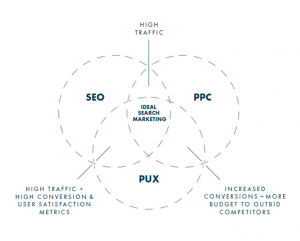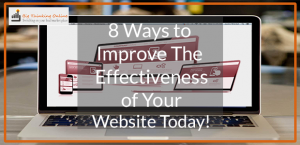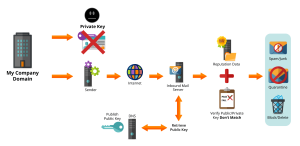When I outlined the most commonly-asked questions about the Visa Claims Resolution initiative last September, I briefly touched on a tool called Visa Merchant Purchase Inquiry, or VMPI. This plugin enables banks and eCommerce merchants to quickly and easily resolve transaction disputes before they become chargebacks.
As a merchant, VMPI could have a tremendous impact on your bottom line. So, with that in mind, it’s worth delving into the details of this tool to see how it works, and how merchants can make the most of it.
VMPI: Optimizing the Chargeback Process
Any time a Visa cardholder contacted their bank to inquire about a transaction prior to the April 2018 launch of Visa Claims Resolution, there was a good chance the inquiry would result in a chargeback.
In the event of a dispute, it’s up to you to provide evidence to refute the buyer’s claim (a process called chargeback representment). This a time-consuming procedure; it could take weeks, or even months, before the chargeback is finally settled. Even worse, you’d be on the hook for nonrefundable fees, added overhead, and threats to your long-term business sustainability.
Visa Merchant Purchase Inquiry, which rolled out as part of Visa Claims Resolution, overhauled this entire process. VMPI enables automated, real-time communication between banks and merchants. In this way, the plugin makes it possible to resolve transaction inquiries in seconds, rather than weeks.
To illustrate, assume a consumer looks at her bank statement and sees a transaction she doesn’t recognize. She assumes it may be fraud; in reality, it was a legitimate transaction complete a few weeks earlier, but she’s unable to recognize the billing descriptor.
With the traditional chargeback process, the customer would typically contact the bank, who then files a chargeback on the customer’s behalf. It would be up to you to provide evidence to prove the transaction was legitimate. With VMPI, though, the bank would first submit a transaction inquiry, allowing them to pull-up key transaction details like shipping information, product names, and billing information. The bank can resolve the situation before a chargeback is ever filed.
Responding to a Purchase Inquiry
The Visa Merchant Purchase Inquiry plugin has a twofold purpose. It’s partly to intercept as many issues as possible before they become chargebacks, but it also serves to speed-up the dispute process by automating as much activity as possible.
Information provided via the automated process may not be enough to resolve every scenario. If that’s the case, the bank will reach out to you directly (via VMPI) for more information. You can then respond in one of two ways: either issue a credit notice, or submit a transaction inquiry response.
#1. Issuing a Credit Notice:
If the problem is the result of genuine fraud or merchant error, you should submit a credit notice and refund the cardholder, and immediately note the refund in your CRM. Your next step should be to cancel order fulfillment if goods have not yet been shipped, and also cancel any future rebills (if applicable). After taking these steps, the issue will be resolved, and no further action is necessary.
#2. Submitting a Transaction Inquiry Response:
If you believe the transaction was legitimate, you should respond by providing all the additional information requested by the bank. Be sure to note the VMPI resolution in your CRM, and follow-up on any pending action items to keep tabs on the case. Finally, be prepared to begin the representment process if the bank escalates the inquiry to a dispute.
Chargeback Data: VMPI’s Ancillary Benefit
Visa Merchant Purchase Inquiry can speed-up processes, reduce overhead, and even prevent some chargebacks. That’s not the only benefit on offer, though.
One of the greatest obstacles facing merchants when it comes to chargebacks is a lack of insight. The dispute process is confusing and opaque; chargeback reason codes are unreliable, and the average merchant is going to struggle just to identify genuine sources. The result is that an estimated 60-80% of all chargebacks filed are potential cases of friendly fraud.
With VMPI in place, though, you can have a better understanding of your disputes than ever before. That’s because, overtime, your use of the tool produces an extensive body of data on both transactions and transaction inquiries. You can develop a better understanding of your chargebacks through in-depth analysis of this data; everything from recurring dispute triggers to effective reconciliation strategies is at your disposal.
You can examine your inquiry response performance, and take note of which responses are most effective. Also, you can also track which submissions were seen as insufficient by issuers, and why they were rejected.
Applying the insights you gain here enables you to be more effective at assembling future responses. This offers the possibility of seeing long-term chargeback reduction.
How Can I Enroll in VMPI?
The primary function of Visa Merchant Purchase Inquiry may be faster chargeback resolution, but you can’t overlook the value of secondary perks like data insight and long-term chargeback prevention. Here’s the thing, though: the Visa Merchant Purchase Inquiry is an opt-in platform.
You have every reason to take advantage of VMPI, but you won’t be able to do so unless you’re enrolled. For some merchants, this is handled at the acquirer level; you should check with your bank to verify whether the VMPI plugin is in use. Alternately, you can also work with a third-party VMPI facilitator.
A facilitator is an entity authorized by Visa to act as an intermediary in the Visa dispute process. A select number of businesses in the fraud and chargeback mitigation space operate as Visa VMPI facilitators. Partnering with one of these service providers enables you to incorporate VMPI usability as part of a broader chargeback management strategy.
Do you have experience with Visa Merchant Purchase Inquiry? Share your insights in the comments section below.
Digital & Social Articles on Business 2 Community
(30)






